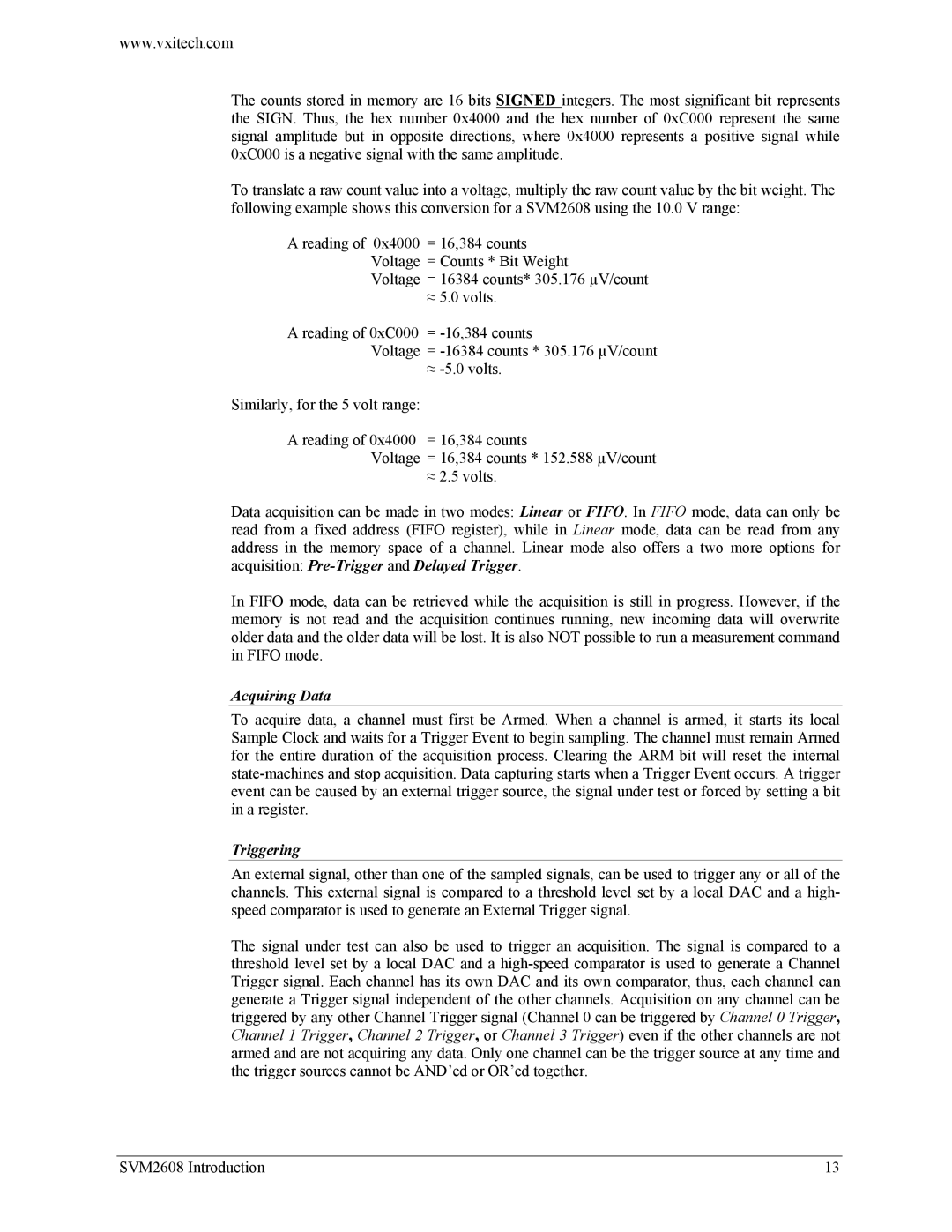
www.vxitech.com
The counts stored in memory are 16 bits SIGNED integers. The most significant bit represents the SIGN. Thus, the hex number 0x4000 and the hex number of 0xC000 represent the same signal amplitude but in opposite directions, where 0x4000 represents a positive signal while 0xC000 is a negative signal with the same amplitude.
To translate a raw count value into a voltage, multiply the raw count value by the bit weight. The following example shows this conversion for a SVM2608 using the 10.0 V range:
A reading of 0x4000 = 16,384 counts
Voltage = Counts * Bit Weight
Voltage = 16384 counts* 305.176 µV/count
≈5.0 volts.
A reading of 0xC000 =
Voltage =
≈
Similarly, for the 5 volt range:
A reading of 0x4000 = 16,384 counts
Voltage = 16,384 counts * 152.588 µV/count
≈2.5 volts.
Data acquisition can be made in two modes: Linear or FIFO. In FIFO mode, data can only be read from a fixed address (FIFO register), while in Linear mode, data can be read from any address in the memory space of a channel. Linear mode also offers a two more options for acquisition:
In FIFO mode, data can be retrieved while the acquisition is still in progress. However, if the memory is not read and the acquisition continues running, new incoming data will overwrite older data and the older data will be lost. It is also NOT possible to run a measurement command in FIFO mode.
Acquiring Data
To acquire data, a channel must first be Armed. When a channel is armed, it starts its local Sample Clock and waits for a Trigger Event to begin sampling. The channel must remain Armed for the entire duration of the acquisition process. Clearing the ARM bit will reset the internal
Triggering
An external signal, other than one of the sampled signals, can be used to trigger any or all of the channels. This external signal is compared to a threshold level set by a local DAC and a high- speed comparator is used to generate an External Trigger signal.
The signal under test can also be used to trigger an acquisition. The signal is compared to a threshold level set by a local DAC and a
SVM2608 Introduction | 13 |
